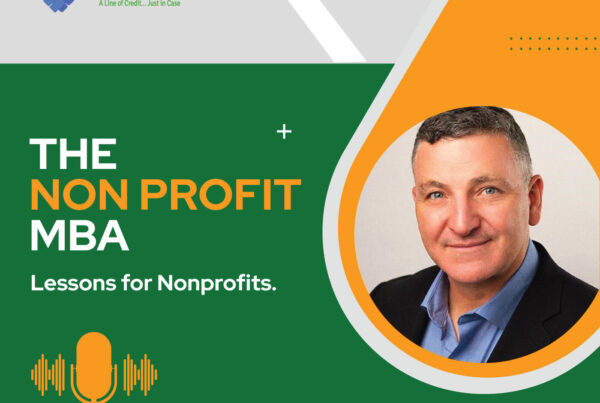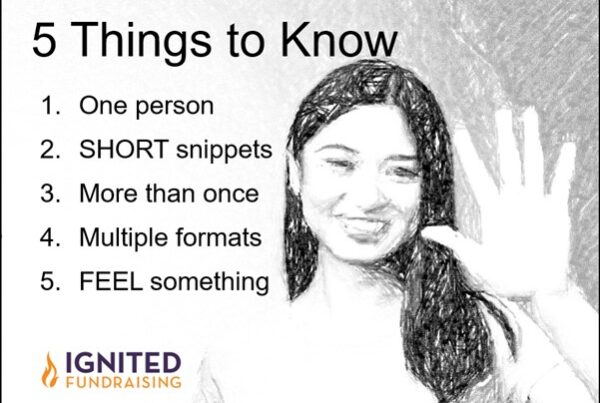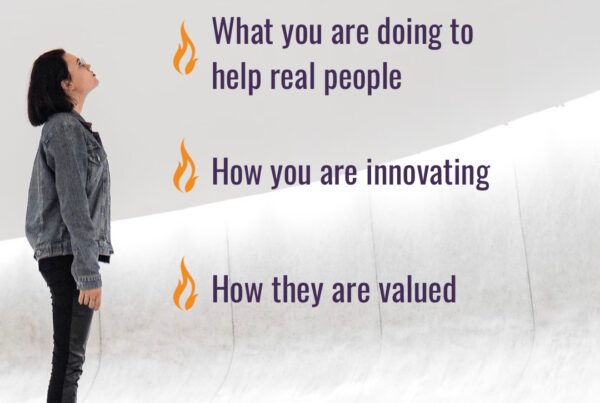I was watching an interview with U2’s Bono recently about his success. He and his band have been touring and creating music for 30 years. It’s not easy to sustain rock-stardom for such a very long-time.
What Bono said had me thinking about our sector and how we really don’t focus on a simple tenet of success very well. He said “keeping things fresh” is a core reason for U2’s success.
U2 doesn’t just do the same thing over and over again because it’s safe and has worked in the past. They don’t simply repeat the same formula for writing songs or giving concerts. They take risks and keep things interesting, exciting and fresh.
Here are some ways U2 keeps things fresh:
- They find new and exciting venues for their performances.
- They communicate using multiple forms of social media as it has become an effective way to build community.
- They continue to look for ways to keep their work [their music & performances] fresh by digging down deep into themselves to tell stories that will touch others.
- They listen to what their fans are saying and provide what fans want at a level that is even better than last time.
- They take risks that excite themselves and their fans.
If you take a look at this list, which of these can you take on this year to keep the volunteer and donor experience at your organization fresh, rewarding, and creating more action/participation?
What I know for sure is that it takes time, thoughtful planning, and a focus on the volunteer or donor to keep things fresh. If you only focus on meeting your numbers and staying safe things get stale and people move on.
Seven questions to ask to keep things fresh:
- Do we thank donors in ways that are meaningful to THEM?
- Do we change the wording on the thank you letters regularly?
- Do we have the board and long-time donors make thank you calls in the acknowledgment process?
- Do we tell new, poignant and interesting stories everywhere? Online. In print. At in-person meetings?
- Do we listen to our supporters to find out what excites them and to learn what MORE they’d like to know or experience about our work?
- Are we sharing information monthly about the current financial status or what I call the “funding gap” so supporters are aware that there is more work to do?
- Are our meetings & events edgy, engaging, informative, and cause people to WANT to support us more deeply?
Asking these seven questions can do a lot to move your organization and yourself out of the comfort zone.
Quick example: An organization I work with that builds affordable housing held the first 15 minutes of a meeting with key donors & volunteers under a bridge on a hot day last summer. Those attending got to see, up close and personal, where the people who eventually live in their affordable housing units come from.
People were moved & inspired to really tackle the volunteer tasks they were being asked to perform. Those volunteers went on to help the organization raise hundreds of thousands of dollars a few months later.
Comfortable and “same old, same old” can create an environment where your supporters go elsewhere because they don’t really feel excitement and pride for supporting your work.
If your organization looks “just fine” and you portray an image that you’ve got everything handled, it may look like you really don’t need any more from them. The message is: we don’t need you to take any additional action.
As marketing guru and New York Times best-selling author, Seth Godin, reminds us:
“Nonprofits sell feeling good.”
Find ways to keep your message fresh. Make it clear that taking action, i.e. giving additional support of time and dollars, will cause your supporters AND those you serve to feel great.
This post was included in Withism’s from Lori: Boldness, Clarity & Wisdom for Fundraising Professionals Making a Difference (Volume 1), now available in paperback, on Kindle, and Nook.








What a wonderful example, Lori. It’s not only about being fresh and creative, but deepens the understanding of the mission…my perfect combination.
I’m reminded of two organizations I worked with, one as staff and one as a board member, where we regularly held meetings at different locations that had a program meeting for the organization. And made sure that we had tours before those meetings started. Those events stick with me much more than a classic around the conference table meeting.
Gayle, holding meetings at different locations has to be one of the easiest and powerful ways to keep the mission front and center, I agree. It also keeps things fresh for staff. And oh, don’t we need to have things fresh and exciting once in awhile?
Yes, yes, yes! Don’t forget your fresh perspective as we came into the New Year. Even though the dreary days of February are almost upon us, work extra hard on “keeping it fresh.” Take heart – Spring will be here before we know it. 🙂
Great post, Lori. You’re a fund raising rock star!
Love it Lori! Gosh, just imagine what changes there would be if nonprofits followed these tips from Bono!
Sandy Rees
Thanks for the posts & reads. It’s fun when those not always thought of as fundraisers can inspire our work.
Love this post! Will share with my readers in our weekly Mixed Links post on Friday.
thanks, Kivi!!